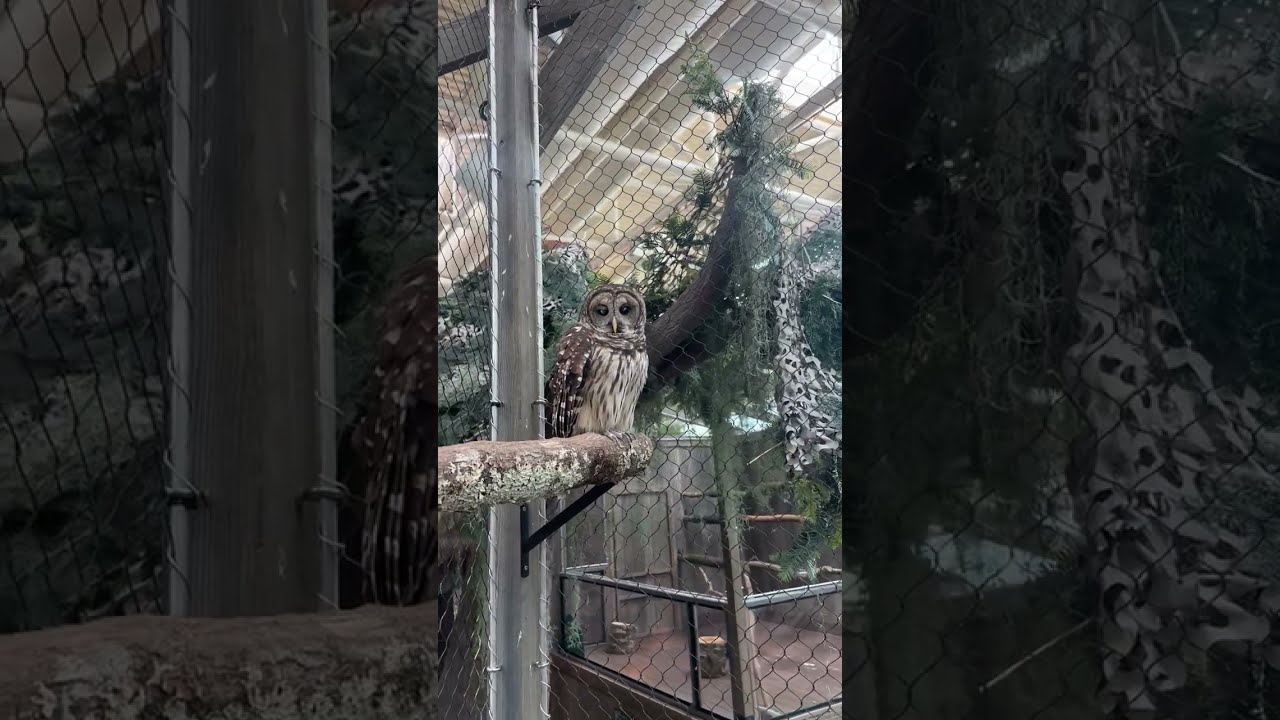- Introduction to Taz, the Audubon Aquarium’s new barred owl ambassador and its significance for public education and wildlife conservation efforts.
- The biology and ecology of barred owls, discussing their habitat, behavior, and role in their ecosystem, highlighting their adaptability and broad distribution.
- Conservation challenges faced by barred owls, including habitat loss and competition with other species, with a focus on strategies to protect their populations.
- The role of zoological institutions in wildlife conservation, education, and research, showcasing the Audubon Aquarium’s commitment to these goals.
- An exploration into the importance of wildlife ambassadors like Taz in raising awareness and inspiring action towards environmental conservation.
At the Audubon Aquarium, excitement fills the air with the introduction of Taz, the new barred owl ambassador. This addition marks a significant step in enhancing public understanding and involvement in wildlife conservation. Barred owls, known for their striking appearance and distinctive calls, are fascinating creatures deeply connected to their ecosystems. This article will provide an in-depth exploration of barred owls, elaborating on various aspects from biology to conservation efforts, and the critical role federal and private institutions like the Audubon Aquarium play in these efforts.
Barred owls (Strix varia) are native to North America, inhabiting areas ranging from the dense forests of the eastern United States to parts of the Pacific Northwest and southern Canada. Known for their mottled brown and white plumage and strikingly dark eyes, barred owls are vocal birds, often recognized by their characteristic “who-cooks-for-you” call. These owls are largely nocturnal, utilizing their keen senses to hunt small mammals, birds, and reptiles, though they may also be seen hunting during the day.
Ecologically, barred owls are generalists, capable of adapting to various habitats, from thick woodlands to suburban environments, which has contributed to their relatively stable population numbers. However, as with many wildlife species, they face challenges that threaten their habitats and lifestyles. Development and deforestation significantly fragment their natural habitat, reducing the availability of prey and increasing encounters with humans. Additionally, the barred owl’s presence in new regions, such as the western United States, brings them into competition with the endangered spotted owl, further complicating conservation efforts.
To address these challenges, conservation strategies are diverse and multifaceted. They include preserving and restoring habitats, regulating logging activities, and monitoring invasive species. Restoration projects often aim to recreate the barred owl’s natural environment, encouraging population stability. Moreover, significant emphasis is placed on research initiatives to understand the ecology and distribution of this species, guiding effective conservation management strategies.
Beyond habitat management, another imperative aspect of conservation is education, where zoological institutions play a pivotal role. Facilities like the Audubon Aquarium create accessible platforms for learning about diverse species and their ecological importance. Zoos and aquariums have transitioned from mere displays of animals to centers of conservation education and scientific research, fostering partnerships with conservation organizations worldwide. Through initiatives and ambassador animals like Taz, institutions strive to connect the public with nature, promoting stewardship and advocacy for wildlife protection.
Wildlife ambassadors such as Taz hold profound importance in conservation dialogues. These animal representatives serve as symbols of larger ecological stories, engaging and educating the public about environmental issues. Personal encounters with such ambassadors can evoke emotional connections, stimulating awareness and a sense of responsibility toward biodiversity preservation. By humanizing aspects of wildlife, these programs also encourage discussions on broader topics like habitat conservation, climate change, and sustainable living.
The Audubon Aquarium, renowned for its commitment to wildlife conservation and education, continues to harness the potential of wildlife ambassadors effectively. Their programs aim to inspire visitors of all ages, making conservation concepts accessible and relatable. Educational initiatives often extend beyond the aquarium, seeking to reach audiences through digital content, community outreach, and partnerships with schools, offering extensive learning opportunities. These efforts emphasize an experiential approach to conservation learning, aiming to inspire action and foster informed environmental citizens.
In the digital age, the impact of educational videos and supportive online platforms is substantial. They effectively broaden the reach of conservation messages, engaging a global audience curious about animals like Taz. Online communities further amplify this reach, facilitating discussions and raising awareness of crucial conservation topics. This strategy complements physical visits to the aquarium, reinforcing the educational and conservation missions.
The celebration of Taz’s introduction goes beyond a mere enhancement to the Audubon Aquarium’s exhibit roster. It signifies an ongoing commitment to wildlife preservation and education, underscoring the interconnectedness of ecosystems and human responsibility. By involving the public in these conservation narratives, institutions like Audubon Aquarium foster an educated, proactive community inclined towards environmental stewardship. The journey shared with our new friend, Taz, serves as both a learning endeavor and a rallying point for broader conservation efforts, urging collective participation in safeguarding our planet’s future.
*****
Source Description
Taz is less than two years old and was deemed non-releasable by the LSU Raptor Rehab program due to a wing injury. Taz is adjusting well to his new home and is very observant of his surroundings (as an owl should be). We’re hooting with excitement that we’re able to offer Taz a forever home. 🦉 #barredowl #owl #owlsoftiktok #hoot #owltok #neworleans


